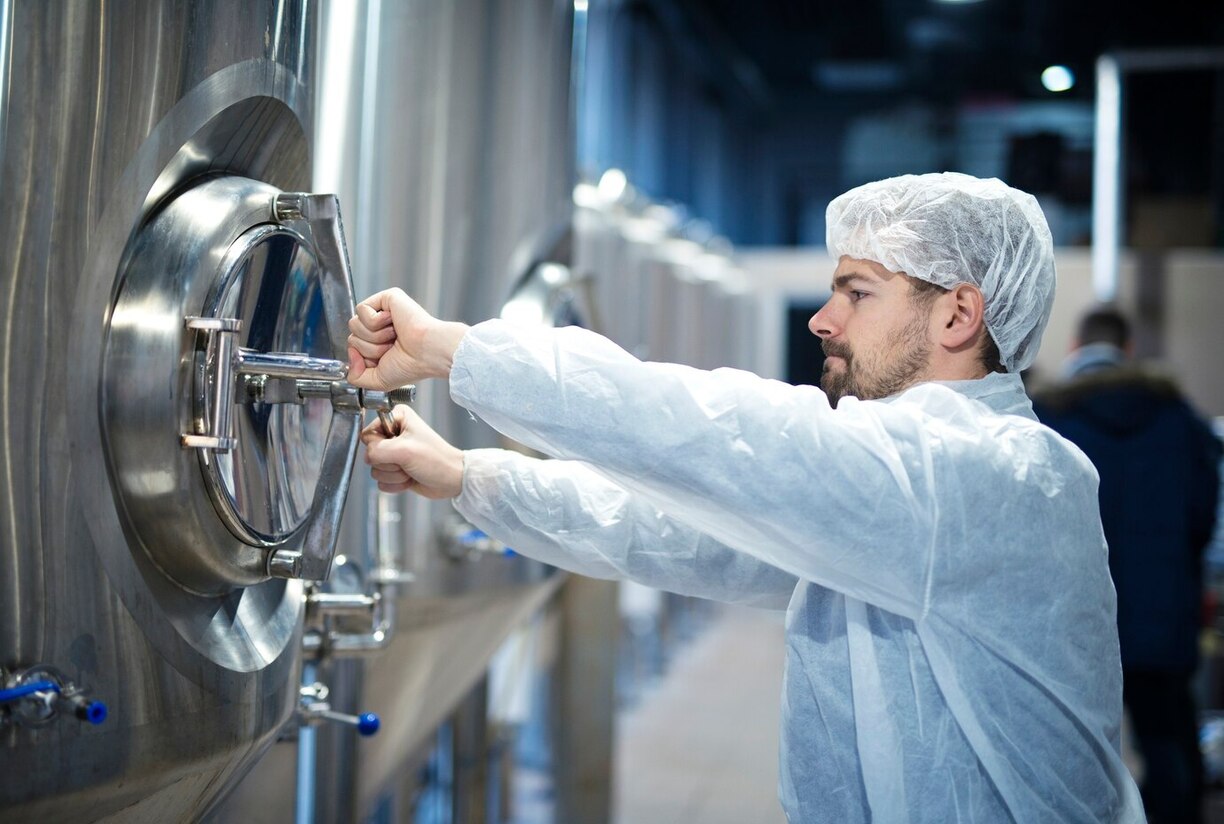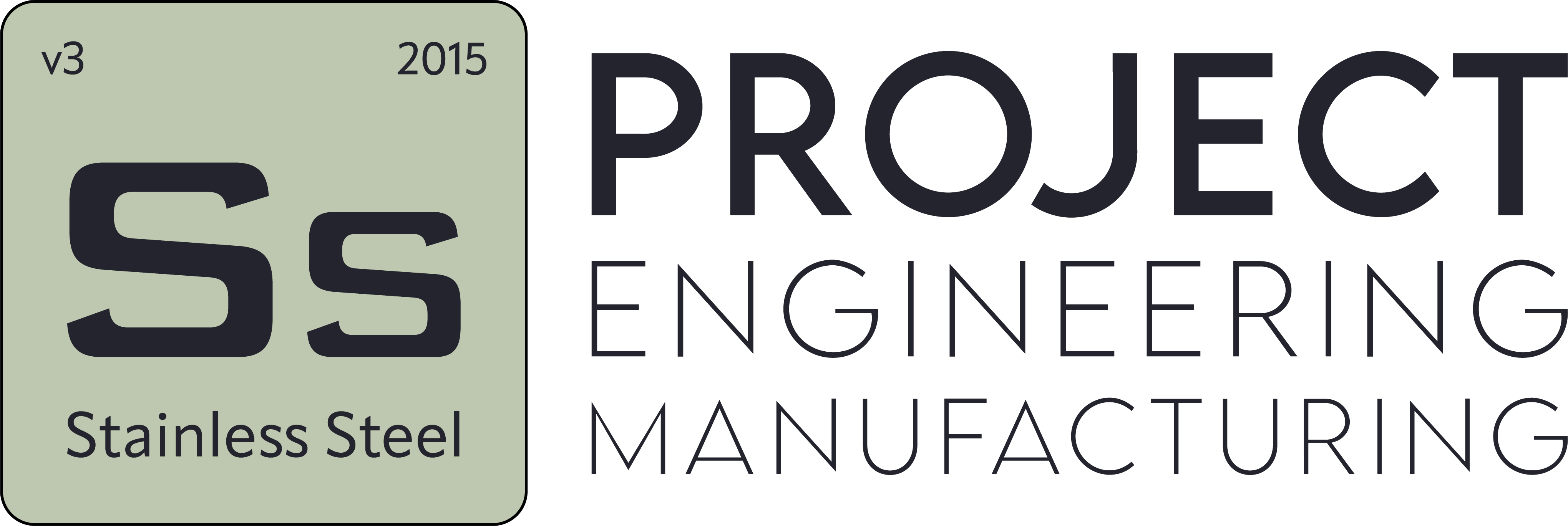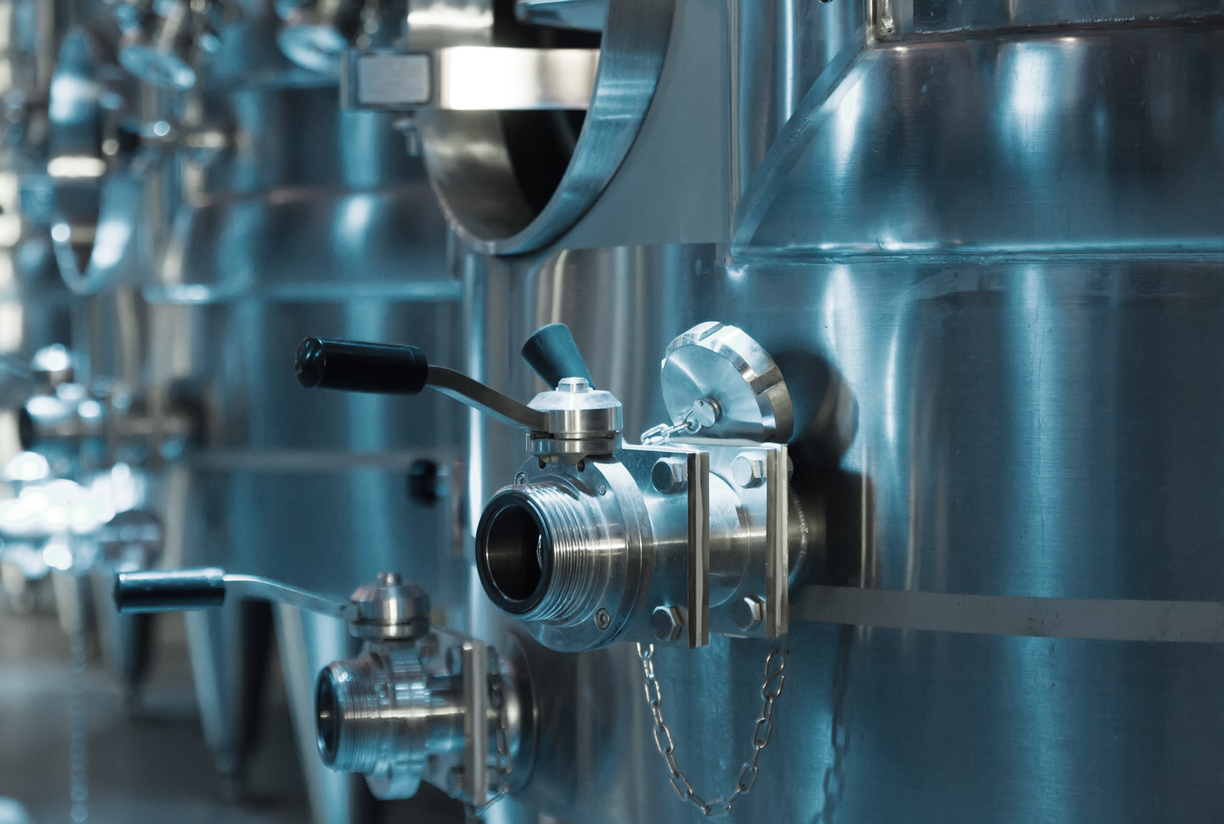Food Grade Tank Factory
- Blog
- Food Grade Tank Factory
Food Grade Tank Factory
Food Grade Tank Factory: Production and Technological Infrastructure
Food grade tank factories are an essential part of the food industry. These factories produce tanks designed specifically to ensure the safe storage, transportation, and processing of liquid food products. In the food sector, the quality and safety of products come above all else. Therefore, the materials used in food grade tank production, the manufacturing processes, and hygiene standards are of great importance. Food grade tanks are manufactured using stainless steel, polyethylene, and other materials compliant with food safety standards. This article will examine in detail how food grade tank factories operate, their production processes, the technologies used, and their role in the industry.
Production of Food Grade Tanks: Key Steps and Material Selection
Food grade tank production is achieved through a combination of specialized materials and advanced manufacturing techniques. In the first stage, the type of liquid products the tanks will store is determined, and the appropriate material selection is made accordingly. Typically, materials such as stainless steel, polyethylene, and in some cases glass are used. Stainless steel is the most commonly used material in food grade tank production due to its durability and hygienic properties. Steel is resistant to corrosion, which ensures the tanks have a long lifespan. Additionally, the surfaces that come into direct contact with food products are very easy to clean.
The production process of a tank begins with design and progresses through various stages. During the design phase, the tank’s size, capacity, and intended use are determined. This information shapes the technical specifications required during production. In the next stage of production, the selected material is shaped using advanced technologies such as laser cutting or welding. During this process, the tank’s interior surface is designed to be smooth, as any accumulation or spoilage of food substances inside the tank would hinder its efficient operation.
Features and Applications of Tanks
Food grade tanks do not only store liquid food products but are also used in the processing and transportation of food products. For example, products like milk, fruit juice, and olive oil can be stored in food grade tanks without spoiling for long periods. These tanks have a wide range of applications across different industries. Food grade tanks are typically found in food processing plants, beverage production factories, and dairy production facilities. Additionally, these tanks are also used in large-scale food distribution centers and storage areas.
The sizes of the tanks are generally customized based on the needs of the production facility. While 500-liter tanks may be used for small-scale production, tanks with a capacity of up to 10,000 liters can be produced for large industrial production facilities. All of these tanks are designed to ensure the safe storage of food products, and each tank enables liquid food products to be stored without spoiling for extended periods. The features of the tanks vary depending on production requirements, but they must always be hygienic and safe.

Technological Advancements and Advanced Manufacturing Methods
Food grade tank production has undergone a significant transformation with technological advancements. Today, automation systems are widely used in production processes. These systems provide speed and efficiency in the tank production process. Automation minimizes human errors while also reducing production costs. Additionally, automation systems ensure that the quality of the tanks is monitored at every stage, enabling the production of high-quality products.
Advanced welding technologies ensure that the interior surfaces of tanks are smooth, facilitating cleaning and disinfection processes. Moreover, these technologies make the production process faster and more efficient. Various testing and quality control stages ensure that each tank is produced perfectly. These technologies maintain food safety at the highest level, ensuring that every tank complies with international hygiene and quality standards.
Food Safety and Hygiene Standards
Food grade tanks are subject to strict hygiene rules to ensure food safety. The cleanliness of surfaces that come into contact with food is extremely important. To prevent any bacterial or dirt accumulation on the tank’s interior surfaces, high hygiene standards are adhered to during production. Cleaning and disinfection processes are carried out at every stage of production. The design of the tanks is optimized to allow cleaning processes to be performed easily.
In addition to the materials used in factories, the equipment on the production line must also meet high hygiene standards. Tools used in the manufacture of tanks must be cleaned and sterilized after each production cycle. Furthermore, hygienic conditions are meticulously maintained during the storage and transportation stages of the tanks. Any burrs or contamination can directly affect the product’s quality, which is why every stage is inspected by food safety experts.
The Future of Industrial Food Tanks
Food grade tank factories will continue to evolve in the future with more efficient, sustainable, and environmentally friendly production methods. Sustainability has become a key priority in the food industry. Factories are designed to be more mindful of energy efficiency and waste management. Additionally, thanks to innovative materials and technologies, it will be possible to produce more durable and eco-friendly tanks.
With advancing technologies, the production processes of food grade tanks are becoming faster, safer, and more efficient. This reduces costs for manufacturers while simultaneously improving product quality. In the future, digital monitoring systems and artificial intelligence-based solutions will further optimize tank production. These technologies ensure quality control at every stage of the production process, making industrial food production increasingly safer with each passing day.
Food grade tank factories are an indispensable part of the food industry. These factories use high-standard technologies and materials to produce quality and safe products. By ensuring hygiene and quality control at every stage of production, they enable liquid food products to be stored under optimal conditions. In the future, it is expected that food grade tank factories will further develop with sustainable and energy-efficient production methods.
Other Factors Considered in the Design of Food Grade Tanks
Another important factor considered in the design of food grade tanks is their durability. The tanks must have high physical and chemical durability. In the storage of liquid food products, it is of critical importance that the tanks are not affected by chemical reactions. The materials used in tank design must be resistant to high temperatures and pressures. Especially in the production of alcoholic beverages and dairy products, these factors are carefully considered to ensure the tanks remain durable over time. For this reason, stainless steel is the most preferred material. Steel can also safely withstand the effects of corrosive food substances.
Storage of Liquid Food Products in Tanks
During the storage of liquid food products in tanks, ensuring the correct temperature and humidity conditions is of great importance. These conditions ensure that food products stay fresh and are stored without spoiling. Tanks are typically equipped with insulation systems to maintain temperature control. This insulation helps keep products within the desired temperature range while also saving energy. Temperature control is a key factor in preventing spoilage, especially for products like dairy and fruit juice. Similarly, humidity levels are another important parameter affecting product quality. The interior of the tanks is optimized to maintain this humidity balance.
Maintenance and Cleaning Processes of Food Grade Tanks
For food grade tanks to operate efficiently, regular maintenance and cleaning processes are necessary. Cleaning must be performed before and after each production cycle to ensure food safety. The interior surfaces of the tanks must be regularly disinfected to prevent the growth of bacteria or other contaminants. The materials used in the tanks must be easy to clean and should not exhibit any features that pose a risk of wear or dirt accumulation over time. Additionally, the exterior surfaces of the tanks should also be frequently cleaned and checked for any damage. These maintenance and cleaning processes not only ensure the safety of the products but also extend the lifespan of the tanks.
The Role of Food Grade Tanks in the Global Market
Food grade tanks are recognized worldwide as an important part of the food industry. As food consumption increases in developing markets, the demand for these tanks is also rising. Particularly in developing countries, the production and use of food grade tanks are rapidly increasing alongside the growth of industrial food production. In the global market, the production of these tanks is largely carried out using stainless steel and high-quality plastic materials. Food producers prefer tanks that are durable and long-lasting. Therefore, sustainable production processes and the use of innovative materials are driving the development of food grade tank factories worldwide.
Economic Contributions of Food Grade Tank Factories
Food grade tank factories also provide significant economic contributions. These factories not only create local employment but also enable the food industry to operate efficiently. The production of tanks offers substantial cost advantages to food producers in the long term. Tanks allow food products to be stored for longer periods and transported more efficiently, reducing production costs. Additionally, optimizing the design and production processes of tanks makes it possible to produce more products with less energy and raw materials, benefiting both producers and the environment.
Food grade tank factories play an important role in the development of the food industry. The advanced technologies used in production processes, strict adherence to hygiene standards, and sustainable production methods increase the significance of these factories. Tanks not only ensure food safety but also enhance the efficiency of production processes. In the future, these factories are expected to further evolve with more eco-friendly and sustainable production methods. Food grade tank production contributes to the growth of the food sector while also creating opportunities to offer consumers higher-quality and safer products.


